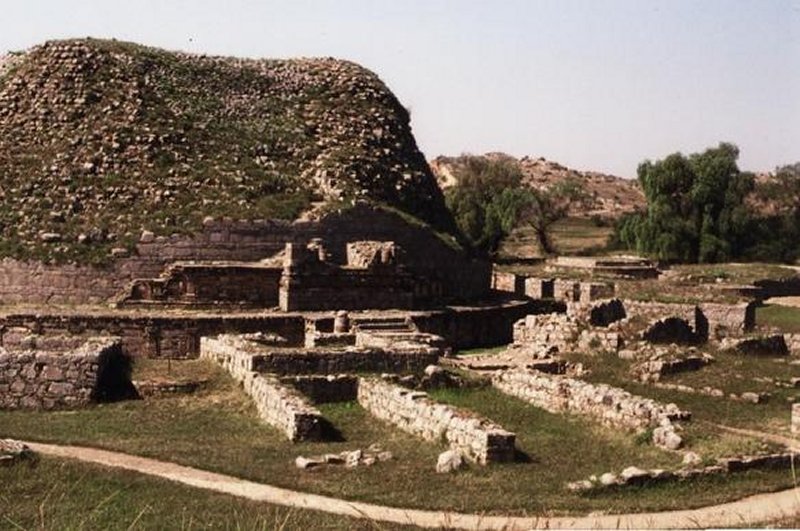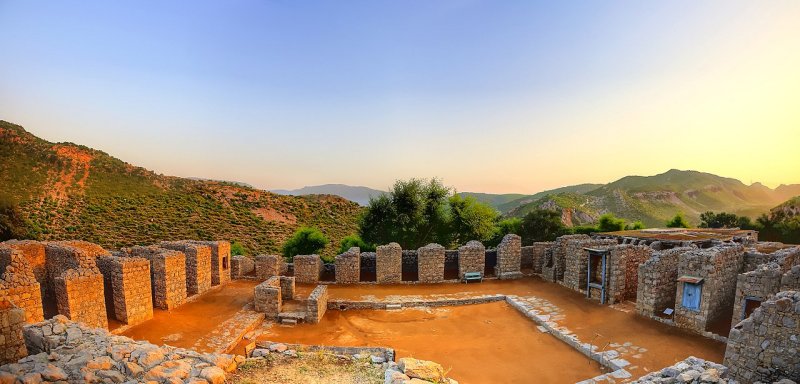Takshashila: Renowned Learning Center That Attracted Buddhist Masters, Disciples And Students Of The World
A. Sutherland - AncientPages.com - According to available ancient references, Takshashila was the first and earliest Buddhist center of Vedic learning, and the city of Takshashila itself also flourished as the center of trade and commerce, which took place under the early dynasties of rulers.
The Dharmarajika Buddhist monastery — ruins at the Dharmarajika, Taxila archaeological site. Located in ancient Taxila — in Punjab Province, Pakistan. Image credit: source
Scholars date back this ancient university to approximately 400-500 BC to 550 AD, which means it gained its reputation at least several centuries before Christ and maintained its prominence until the city's destruction in the 5th century AD.
The city is said to have been founded by the son of the legendary hero Rama's brother.
According to the Ramayana, Lord Rama's brother Bharata established two important cities Takshashila and Pushkalavati, and installed his two sons Pushkala and Taksha, to rule over them.
This prestigious, ancient university, named after "Taksha's Cut-Rock City" in old northern India, has a perfect location on a branch of the Silk Road that connected China to the West. In Sanskrit, Takshashila is derived from 'Taksha' and 'shila' (rock) and describes the foundation rock laid by Bharata's son Taksha for the city.
In the later Pali (Buddhist) language, the city is called 'Takkasila.'
On the other hand, the Greeks referred to it as 'Taxila,' and so it remained over the millennia until today. They also described Takshashila as "wealthy, prosperous and well-governed."
Taxiles King Ambhi (Greek: Omphis) offering presents to Alexander, Image credit: François Verdier 1651 Paris 1730 - Public Domain
The Ramayana describes Takshashila as a magnificent city famous for its wealth and splendor, and the great Mahabharata refers to Takshashila as the place where among others, the Kuru kingdom's heir and grandson of Arjuna, Parikshit, was crowned at the city of Takshashila.
At the time, TakshaShila was described as the wealthiest city in India. The campus attracted students from faraway places. Not only Indians but also students from Babylonia, Greece, Phoenicia, China, Arabia, and Syria studied at Taxila. They could choose from a wide range of subjects such as Vedas, philosophy, medicine, surgery, language, grammar, politics, archery, warfare, astronomy, astrology, accounts, commerce, futurology, documentation, occult, music, and dance.
It is believed that students started their studies at Takshashila at around age 16 after they had completed their primary education at home and secondary education in the Ashrams. Education was considered sacred, and according to an ancient quote written in Sanscrit: "A fool is worshipped at his home, a chief is worshipped in his town, a king is worshipped in his kingdom, and a knowledgeable person is worshipped everywhere."
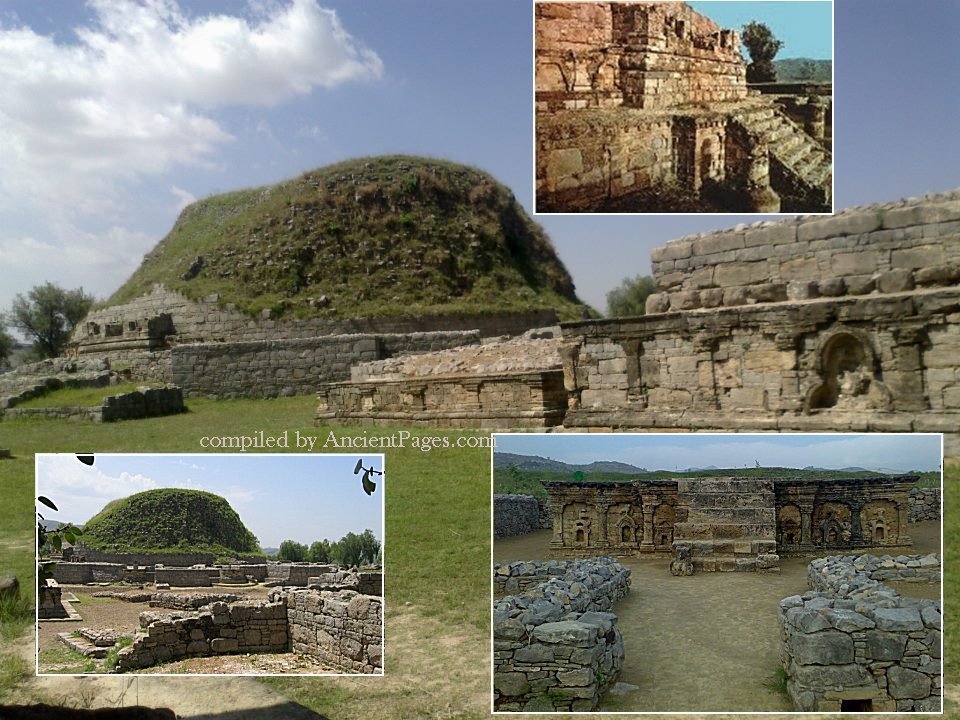 Takshashila ruins are located in the Rawalpindi District of the Punjab province in Pakistan.
Takshashila ruins are located in the Rawalpindi District of the Punjab province in Pakistan.
All of the subjects were taught by experienced masters.
According to ancient references, when Alexander The Great's forces entered Punjab in the fourth century BC, Takshashila had a prestigious reputation as a seat of learning. Alexander took many scholars from there with him on his way back to Greece.
Takshashila is described in 'Jataka tales' written in Sri Lanka and dated between 300 BC and 400 AD.
The 'Jataka tales' are a voluminous collection of sacred Buddhist literature native to India, used commonly in preaching by monks and unprofessional preachers in all Buddhist countries. Many stories tell about the previous lives of the Buddha, in both human and animal forms.
The Buddhist Jataka tales, especially the Takshashila Jataka, refer to the city as the capital of the Gandhara kingdom and describes it as a great seat of learning. However, Takshashila is best known for its association with Chanakya (also known as Kautilya or Vishnu Gupta (c. 370–283 BC). Chanakya was an Indian teacher, philosopher, and royal adviser. He was initially a professor of economics and political science at the ancient Takshashila University in Takshashila (in present-day Pakistan.)
Chanakya (or Kautilya), the Maurya Emperor Chandragupta, and the Ayurvedic healer Charaka (Sanskrit Caraka) are principal contributors to the ancient art and science of Ayurveda, a system of medicine and lifestyle developed in old India studied at the famous Taxila.
Ruins in a Buddhist Monastery, Jaulian, Taxila. Image credit: Faran Shehryar Malik - CC BY-SA 4.0
Generally, a student entered Takshashila at the age of sixteen, which was the minimum entrance age was 16, and there were 10,500 students. The ruins of Taxila contain buildings, Buddhist stupas located over a large area, and many Buddhist monasteries.
There is some disagreement about whether Takshashila can be considered a university. While some think of the place as an early university or center of higher education, others do not consider it a university in the modern sense, in contrast to the later Nalanda University.
Earliest History Of Prominent Vedic Center Of Learning
"The earliest history of Takshashila can be traced to around 3360 BC, based on the findings excavated in the region. However, it is believed that the place was abandoned after the decline of the Indus valley civilization. The first major settlement at Takshashila developed around 1000 BC.
Jaulian Buddhist Monastery, Takshashila. The picture shows the bathing pond (now filled with clay), living quarters, and stupa remain (at the right corner). Image credit: MohammadOmer - CC BY-SA 3.0
The region came within the eastern borders of the Achaemenid and Hellenistic Empires when they attacked the Indus valley region and held control over it for a few centuries. The Achaemenid rulers, King Darius I and King Xerxes, stationed their generals in the area to explore the Indus valley area. Alexander the Great was able to take control of Takshashila in 326 BC without a fight." 1
Decline of Takshashila
It was a devastating time for both the Gandhara Kingdom and Takshashila as well. During the final part of the Gupta period (450 AD), Takshashila fell in between the three-way war between the Persians, the Kidarites, and the White Huns of western Gandhara. Many Buddhist monasteries and stupas of Takshashila were destroyed. This critical situation caused extensive damage to the living settlements and, at the same time, largely disrupted the functioning of the university.
"By 540 AD, the Huns had completely taken over the region and ruled in Takshashila, continuing sporadic devastation and damage. It was a blow from which the city could never recover.
It was the time of rebirth of the essential cults of Hinduism like Vaishnavism and Shaivism. After almost a thousand years of Buddhist dominance began to fail along with the renowned Takshashila.
The Chinese monk and traveler, Hieuen Tsang, wrote that "most of the Buddhist sangharamas [in Sanskrit: संघाराम Saṃgharāmalay means "temple" or "monastery"] ruined and desolate and only a few monks remained there. The city had become a dependency of the Kashmir kingdom with local rulers fighting for its control…."
Undoubtedly, Takshashila was the renowned seat of education in the Buddhist tradition, both religious and historical, and as such, the place will always be remembered.
Written by – A. Sutherland - AncientPages.com Senior Staff Writer
Copyright © AncientPages.com All rights reserved. This material may not be published, broadcast, rewritten or redistributed in whole or part without the express written permission of AncientPages.com
Expand for referencesReferences:
Sayan Bhattacharya, Ancient Cities of India
Allchin R, Allchin B, The Rise of Civilization in India and Pakistan
Encyclopædia Britannica. 2007
More From Ancient Pages
-
 Ancient Roman Sandal With Nails And Game Pieces Found Under A Playground In Germany
Archaeology | Nov 22, 2024
Ancient Roman Sandal With Nails And Game Pieces Found Under A Playground In Germany
Archaeology | Nov 22, 2024 -
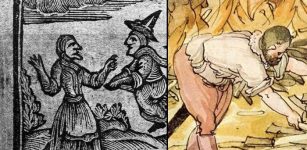 Five Witchcraft Myths Debunked By An Expert
Featured Stories | Oct 27, 2023
Five Witchcraft Myths Debunked By An Expert
Featured Stories | Oct 27, 2023 -
 Hiidenkirnut: Spectacular Millennia-Old Devil’s Churns In Finland
Featured Stories | Jan 16, 2017
Hiidenkirnut: Spectacular Millennia-Old Devil’s Churns In Finland
Featured Stories | Jan 16, 2017 -
 Catherine Of Valois – Scandalous Queen Who Caused Drama Even After Her Death
Featured Stories | Feb 4, 2019
Catherine Of Valois – Scandalous Queen Who Caused Drama Even After Her Death
Featured Stories | Feb 4, 2019 -
 Ilmarinen – Divine Blacksmith And Trusted Friend Of Wizard Vainamoinen In Kalevala
Featured Stories | Nov 16, 2018
Ilmarinen – Divine Blacksmith And Trusted Friend Of Wizard Vainamoinen In Kalevala
Featured Stories | Nov 16, 2018 -
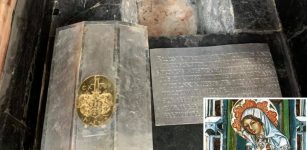 Hidden Silver Casket With Bones Of 13th Century Saint Found
Archaeology | Mar 22, 2020
Hidden Silver Casket With Bones Of 13th Century Saint Found
Archaeology | Mar 22, 2020 -
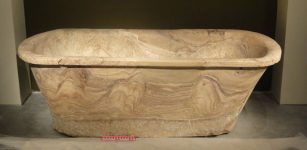 Where Were Herod The Great’s Royal Alabaster Bathtubs Quarried?
Archaeology | May 17, 2022
Where Were Herod The Great’s Royal Alabaster Bathtubs Quarried?
Archaeology | May 17, 2022 -
 Pooka: Solitary Spirit And Not Entirely Benevolent Prankster In Irish Folklore
Celtic Mythology | Jun 4, 2016
Pooka: Solitary Spirit And Not Entirely Benevolent Prankster In Irish Folklore
Celtic Mythology | Jun 4, 2016 -
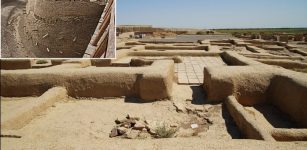 Climate Change, Not Genghis Khan Caused Demise Of Central Asia’s River Civilizations
Archaeology | Dec 17, 2020
Climate Change, Not Genghis Khan Caused Demise Of Central Asia’s River Civilizations
Archaeology | Dec 17, 2020 -
 Boreas – Mighty North Wind God In Greek Mythology
Featured Stories | Mar 26, 2023
Boreas – Mighty North Wind God In Greek Mythology
Featured Stories | Mar 26, 2023 -
 Controversial Ancient History: Did Humans Evolve From Reptilians? The Serpent Connection From Ancient Myths To Modern Science
Featured Stories | Jul 23, 2015
Controversial Ancient History: Did Humans Evolve From Reptilians? The Serpent Connection From Ancient Myths To Modern Science
Featured Stories | Jul 23, 2015 -
 Riddle Of The Hanging Gardens Of Babylon – Ancient Place Still Shrouded In Mystery – Part 1
Featured Stories | Jun 7, 2019
Riddle Of The Hanging Gardens Of Babylon – Ancient Place Still Shrouded In Mystery – Part 1
Featured Stories | Jun 7, 2019 -
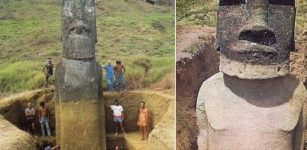 Easter Island’s Statues Reveal Bodies Covered With Unknown Ancient Petroglyphs
Archaeology | Jan 21, 2014
Easter Island’s Statues Reveal Bodies Covered With Unknown Ancient Petroglyphs
Archaeology | Jan 21, 2014 -
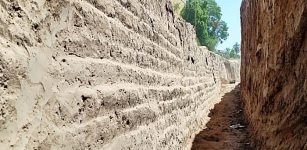 Ancient Mud-Brick Roman Ovens And Massive Wall Dated To Egyptian Late Period Unearthed In Luxor
Archaeology | Jun 26, 2020
Ancient Mud-Brick Roman Ovens And Massive Wall Dated To Egyptian Late Period Unearthed In Luxor
Archaeology | Jun 26, 2020 -
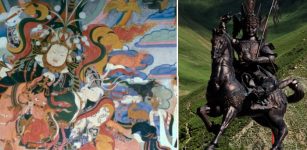 Legendary Epic Of King Gesar Who Descended From Heaven And The Ancient Tarna Monastery
Featured Stories | Nov 20, 2021
Legendary Epic Of King Gesar Who Descended From Heaven And The Ancient Tarna Monastery
Featured Stories | Nov 20, 2021 -
 Maori God Pourangahua And His Flying Bird Traversing The Ancient Skies
Featured Stories | Oct 4, 2015
Maori God Pourangahua And His Flying Bird Traversing The Ancient Skies
Featured Stories | Oct 4, 2015 -
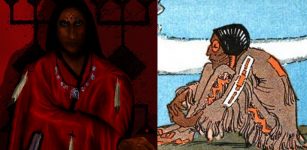 Iktomi – Native American Spider-Trickster Spirit Whose Stories Teach Moral Values
Featured Stories | Jan 28, 2019
Iktomi – Native American Spider-Trickster Spirit Whose Stories Teach Moral Values
Featured Stories | Jan 28, 2019 -
 Fionn Mac Cumhail: Legendary Irish Hero, Clairvoyant And Leader Of Fianna Warriors
Celtic Mythology | Oct 11, 2019
Fionn Mac Cumhail: Legendary Irish Hero, Clairvoyant And Leader Of Fianna Warriors
Celtic Mythology | Oct 11, 2019 -
 Cooper’s Ferry Site In Western Idaho Was Inhabited 16,000 Years Ago
Archaeology | Sep 3, 2019
Cooper’s Ferry Site In Western Idaho Was Inhabited 16,000 Years Ago
Archaeology | Sep 3, 2019 -
 New Egyptian Dinosaur Helps To Reconstruct Evolution Of Dinosaurs In Africa
Archaeology | Jan 30, 2018
New Egyptian Dinosaur Helps To Reconstruct Evolution Of Dinosaurs In Africa
Archaeology | Jan 30, 2018

